An Extremely Fine and Rare Blue and White Cup, Mark and Period of Chenghua (1465-1487)
Lot 3102. An Extremely Fine and Rare Blue and White Cup, Mark and Period of Chenghua (1465-1487). Diameter 7.8 cm. Est. HK$15,000,000-20,000,000 (US$1.940,000-2.580,000). Lot Sold 33,850,000 HKD (4,356,157 USD). Photo: Sotheby's.
exquisitely potted with rounded sides resting on a countersunk base, delicately painted in characteristic soft tones of cobalt-blue in outlines infilled with wash, the exterior with six evenly spaced flowering gardenia sprigs, each with a single bloom enclosed by clustered leaves, the interior with a shallow domed centre (mantouxin) decorated with a medallion enclosing a multi-petalled flower, possibly a hydrangea, encircled by a ring of seven leaves, the base inscribed with the six-character reign mark within a double rectangle, all beneath an unctuous glaze fired to a waxy finish - 7.8 cm, 3 in.
Provenance: Sotheby's Hong Kong, 24th November 1981, lot 69.
Literature: The Leshantang Collection of Chinese Porcelain, Taipei, 2005, cat. no. 8.
A Tea Cup for Lady Wan
Regina Krahl
This adorable cup is one of the characteristic creations of the Chenghua (1465-87) imperial kilns during their most fruitful period of production. The last years of the Chenghua reign, in the late 1470s and 1480s, were not only the kilns’ busiest period, but saw also the development of the finest and most distinctive wares – those we generally associate with this reign name.
Representative of these years are small vessels for the table, such as cups, stem cups, bowls and dishes, as well as small jars. In designing these wares, the potters embarked on a new stylistic direction, breaking with the taste of the Xuande period (1426-35) that was still very much alive in the early part of the Chenghua reign. While the porcelains made at the beginning of the Ming dynasty (1368-1644) were still under the influence of foreign styles, those of the late Chenghua period, such as this cup, are quintessentially Chinese in concept. This period saw the introduction of unconventional, unassuming blue-and-white designs, such as the present flower pattern, which embody the charm and peculiar identity of Chenghua porcelain. The designs are new and new is the modest, simple way in which they are distributed over the vessel surface.
The porcelains of that late phase were intended for personal enjoyment, for individual use in an intimate setting, and cannot be fully appreciated unless they are picked up and turned around in the hand. They require a connoisseur’s eye and touch to be enjoyed in all their beauty. Although the precise reason for this momentous change of style and direction that took place at the imperial kilns at Jingdezhen late in the Chenghua period is not yet fully understood, these manufactories appear to have received unprecedented imperial patronage towards the end of the reign, either directly from the Emperor or from his favourite concubine Wan Guifei (1430-87). Wan Guifei was officially made huang guifei, principle concubine, in 1476 and from then on became notorious for using her power and influence to help her family to important positions and for squandering enormous sums on entertainments and luxuries. Rather than producing practical porcelains for general use at court or for ritual, the imperial kilns concentrated in this period on manufacturing little gems to please and delight their demanding patrons.
This charming cup, with its small size, precise potting, softly curved profile, subdued painting, wonderfully tactile surface, and square reign mark embodies all the qualities that make Chenghua porcelains so desirable. Although several small cups of related shape were produced in the Chenghua reign, the present low, rounded form is particularly pleasant and harmonious in its proportions, and its shallow domed centre inside, known as mantouxin after Chinese steamed (mantou) buns, which is echoed outside by a recessed, concave base, makes it particularly endearing.
The six gardenia flowers, artlessly styled and distributed around the sides, all with a central bloom surrounded by differently arranged leaves, represent a motif otherwise very rarely used on Chinese porcelain; even rarer is the multi-petalled flower inside the cup, perhaps a hydrangea, encircled by a ring of leaves, which does not seem to be otherwise known from Ming blue-and-white. The Chenghua reign mark enclosed in a double rectangle that is inscribed on the base was introduced only in the latter part of the period and is thus found on some of the finest Chenghua pieces.
As all porcelains of Chenghua mark and period, cups of this design are extremely rare. In this case only two other examples appear to be preserved, both in Chinese museum collections: one cup, in the Palace Museum, Beijing, from the Qing court collection, is illustrated in The Complete Collection of Treasures of the Palace Museum. Blue and White Porcelain with Underglazed Red, Shanghai, 2000, vol. 2, pl. 36, where it is stated that this cup was used in the palace for foods; the other is preserved in the Shanghai Museum, published in Wang Qingzheng, Qinghua youlihong/Underglaze Blue & Red, Hong Kong, 1987, col. pl. 77 (fig. 1). No cup of this design appears to be preserved in the National Palace Museum, Taipei, which holds the largest collection of Chenghua imperial porcelains.
fig. 1. Blue and white ‘floral’ bowl, mark and period of Chenghua © Shanghai Museum
This design has also been discovered among the vessels discarded at the Ming imperial kilns and a cup reconstructed from sherds was included in the exhibition A Legacy of Chenghua: Imperial Porcelain of the Chenghua Reign Excavated from Zhushan, Jingdezhen, Tsui Museum of Art, Hong Kong, 1993, cat. no. C 60 (fig. 2), where the piece is identified as a cup for tea, and where Bai Kun wrote “It is a tradition that the more concentrated the tea, the smaller the cup and vice versa. This cup with a capacity of only tens of millilitres was an ideal one for the Emperor Chenghua and Lady Wan to enjoy the art of tea drinking …” and “The relatively thick walls protect one’s hand from being burnt while grasping the hot cup of tea, while the wide mouth and shallow body allow the heat to escape rather quickly.” He further states “It is quite possible that the practice of drinking ‘Gongfu tea’ actually originated during Chenghua and evolved thereafter.” He thus suggests that cups of this form were used for strong fermented tea, similar to that drunk today in the gongfu tea ceremony. Although the practice of gongfu tea preparation can at present not be traced as far back, fermented teas are considered to have been in use by the early Ming dynasty or even earlier (see H.T Huang, Science and Civilisaton in China, vol. 6: Biology and Biological Technology, part V: Fermentations and Food Science, Cambridge, 2000, p. 538). Gardenia blossoms were also used for flavouring tea.
fig. 2. Blue and white’ floral’ cup, mark and period of Chenghua © Jingdezhen Ceramics Archaeology Institute
In his introduction to the Leshantang Collection in Sotheby’s 2008 sale catalogue, entitled ‘A Tradition of Elegance’, Julian Thompson characterised the taste behind the Leshantang Collection as standing in the great Shanghai tradition of ceramic connoisseurship and collecting, and wrote about this cup:
… a small wine cup from the later period of the reign of Chenghua …, when the most delicate of all Imperial porcelains were produced. The glaze is waxy and lustrous, and the underglaze-blue brilliant but soft in texture. The shape is characteristic of the period, with wide, countersunk base and very steep sides, like the famous doucai chicken cups bearing the reign mark written in a double square in place of the usual double circle. The decoration is elegant simplicity itself... Like all Chenghua porcelain, cups of this pattern are rare and only two others are recorded, in the Shanghai Museum and the Palace Museum, Beijing.
Sotheby's. In His Majesty's Palm: Exquisite Porcelain Playthings Hong Kong, 05 Apr 2017, 10:20 AM

/https%3A%2F%2Fprofilepics.canalblog.com%2Fprofilepics%2F1%2F0%2F100183.jpg)
/https%3A%2F%2Fstorage.canalblog.com%2F03%2F02%2F119589%2F96711876_o.jpg)
/https%3A%2F%2Fstorage.canalblog.com%2F11%2F31%2F119589%2F94773502_o.jpg)
/https%3A%2F%2Fstorage.canalblog.com%2F20%2F83%2F119589%2F94772815_o.jpg)
/https%3A%2F%2Fstorage.canalblog.com%2F26%2F72%2F119589%2F75604929_o.jpg)
/https%3A%2F%2Fstorage.canalblog.com%2F59%2F60%2F119589%2F26458628_o.jpg)

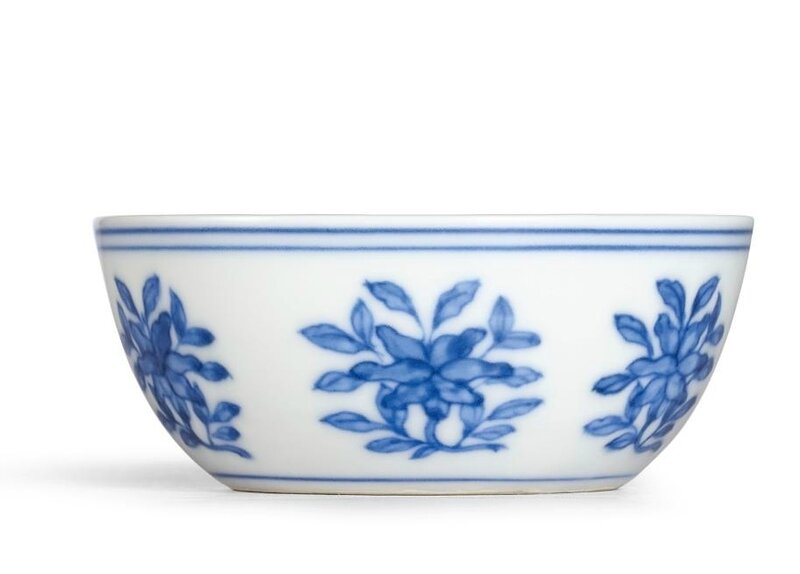
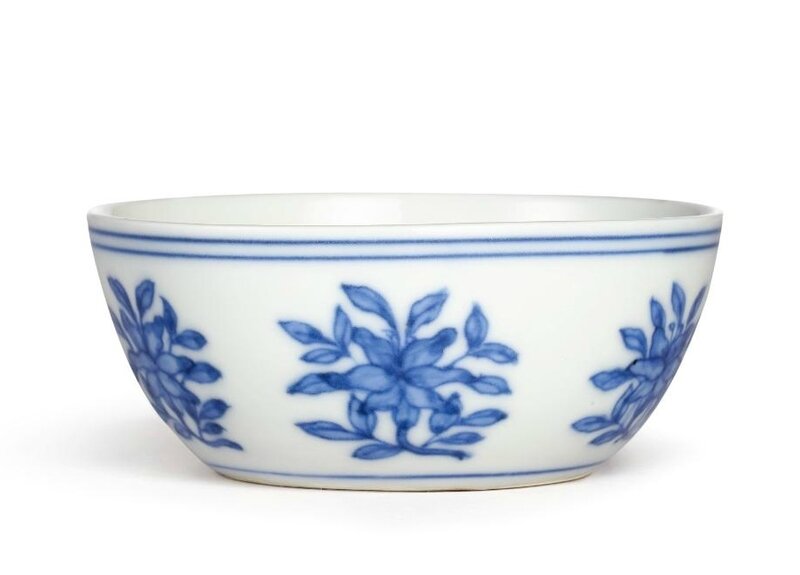
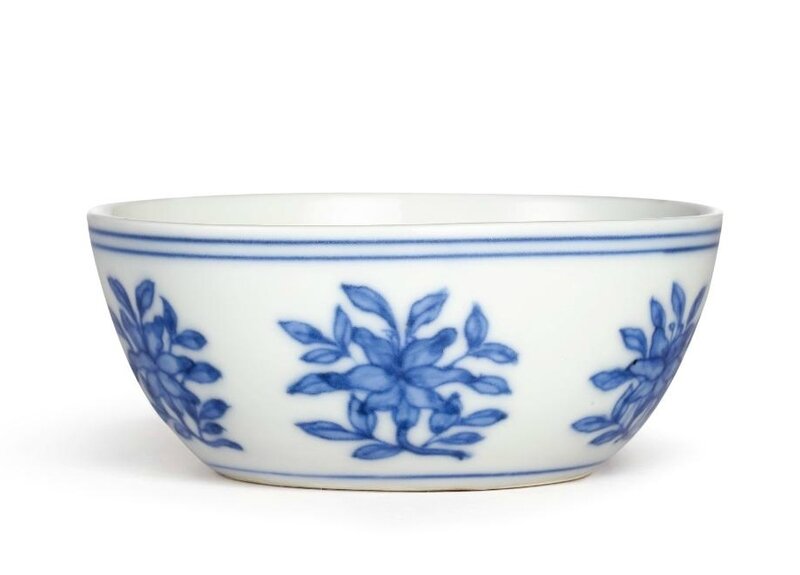
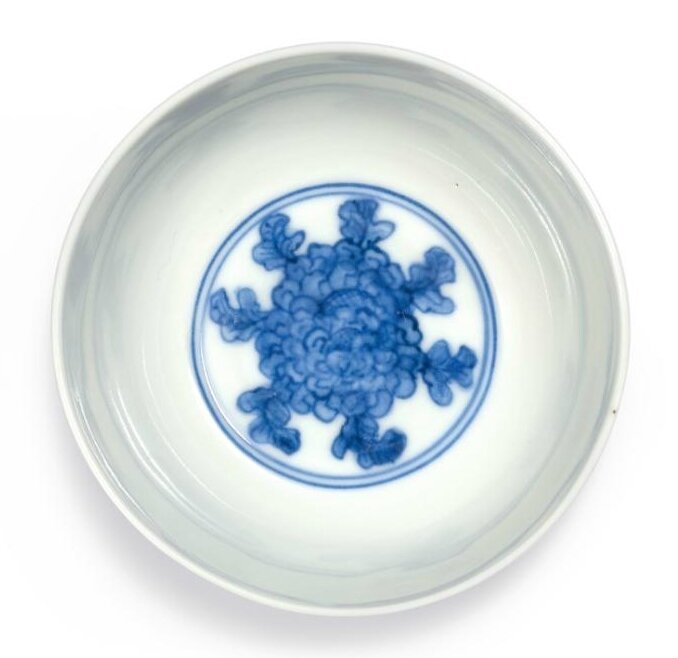
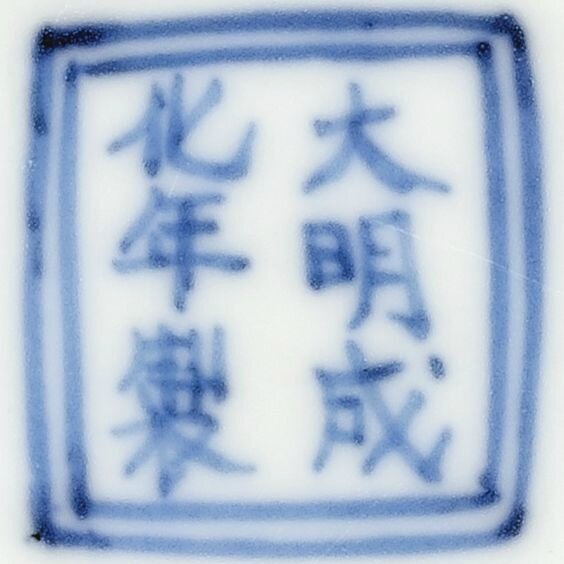

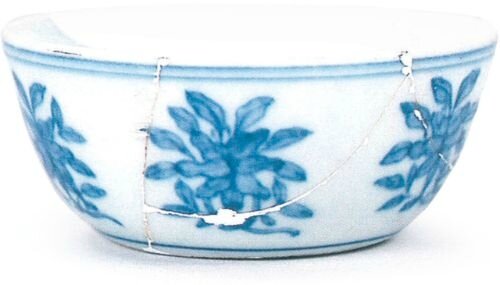


/http%3A%2F%2Fstorage.canalblog.com%2F26%2F94%2F119589%2F127837624_o.jpg)
/http%3A%2F%2Fstorage.canalblog.com%2F05%2F67%2F119589%2F127059084_o.jpg)
/http%3A%2F%2Fstorage.canalblog.com%2F05%2F16%2F119589%2F117974533_o.jpeg)
/http%3A%2F%2Fstorage.canalblog.com%2F65%2F05%2F119589%2F115284845_o.jpg)